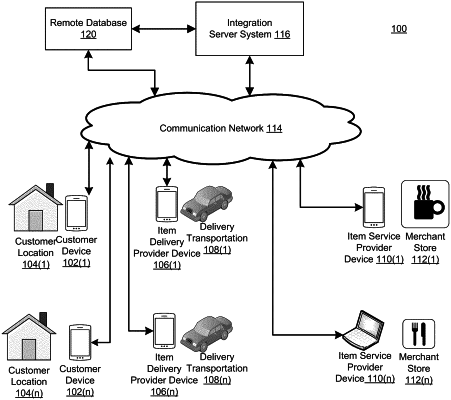| CPC H04W 4/029 (2018.02) [G01S 5/021 (2013.01); G01S 5/0252 (2013.01); G01S 5/14 (2013.01); H04W 4/023 (2013.01)] | 20 Claims |

|
1. A computer-implemented system for multi-point destination arrival time analysis, the system comprising:
a memory storing instructions;
an integration server comprising at least one computing device; and
at least one processor configured to execute the instructions to:
receive, by the at least one processor, from a first system of a first location, a request for at least one orderable item;
receive, by the at least one processor, from a second system of a second location, an acceptance of the request;
determine by the at least one processor, a first arrival estimate using a machine learning algorithm based on a first estimated travel time between the first location and the second location, and the greater of:
a preparation time for at least one item associated with the request, and
a second estimated travel time between the second location and a plurality of third locations associated with a third system, wherein the third system is connected to a global positioning system to determine the plurality of third locations;
determine by the at least one processor, a second arrival estimate using a machine learning algorithm based on the first estimated travel time, and the greater of:
the preparation time for the at least one item, and
a third estimated travel time between locations associated with the second location and an assigned third location;
determine by the at least one processor, a third arrival estimate using a machine learning algorithm based on the first estimated travel time; and
forward by the at least one processor, the first, second, and third arrival estimates to the first system across a communication network.
|